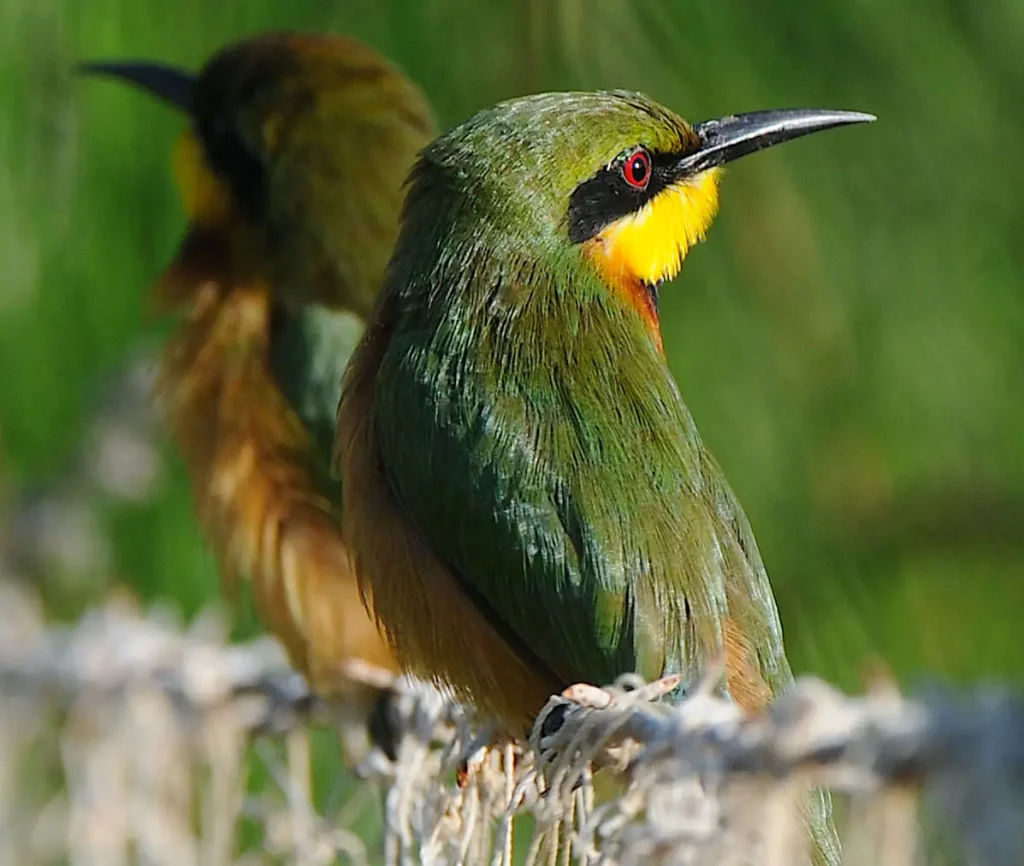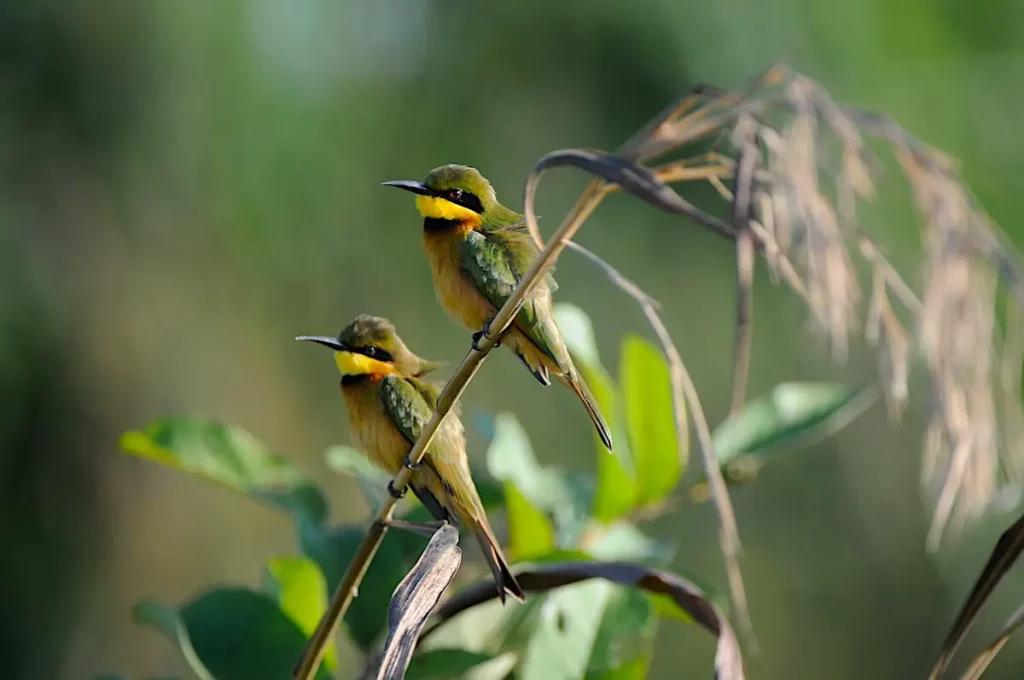Little Bee-eaters, as their name might suggest feed mainly on Bees, Wasps and insects. My personal favourite among the Bee-eater family and should not be confused with Little Green Bee-eaters. They love being at our lodge and visit each day because of our freshwater eco-pool. We have bees and insects congregating around the natural Blackstone filter each day. Which in turn makes our pool a 5-star restaurant for our fine feathered friends.
Where is the Little Bee-eater found?
As mentioned earlier, this little bird is a daily visitor at Footsteps.
They are residents in much of Sub-Saharan Africa.
In Gambia for example this delightful bird is widespread and also generally fairly common in forest interiors next to water.
What does it look like?
The Little Bee-eater, like other Bee-eaters, are a wonderfully brightly-coloured slender bird. They have green upper parts, bright yellow throats with black gorgets and rich brown upper breasts fading to buff orange on their underparts. Their beaks are black and their wings are green and brown. The smallest of all the African bee-eaters, they grow to a length of 15–17 cm.
What does it feed on?
As their name implies, Bee-eaters mostly eat insects, especially Bees, Wasps and Hornets. These acrobatic birds are skilled at catching insects mid-air. They launch their attack from low perches, about one metre high and before dining on their stinging prey they hit it against a hard surface to remove the said sting.
Want to know an interesting Factoid?
It is estimated there are between 60-80 million Little Bee-eaters worldwide. Source Wikipedia. I wonder if there are enough bees to go around
How does it sound?
Mostly these little beauties make no sound at all but when they do its a very soft ” SEEP “


